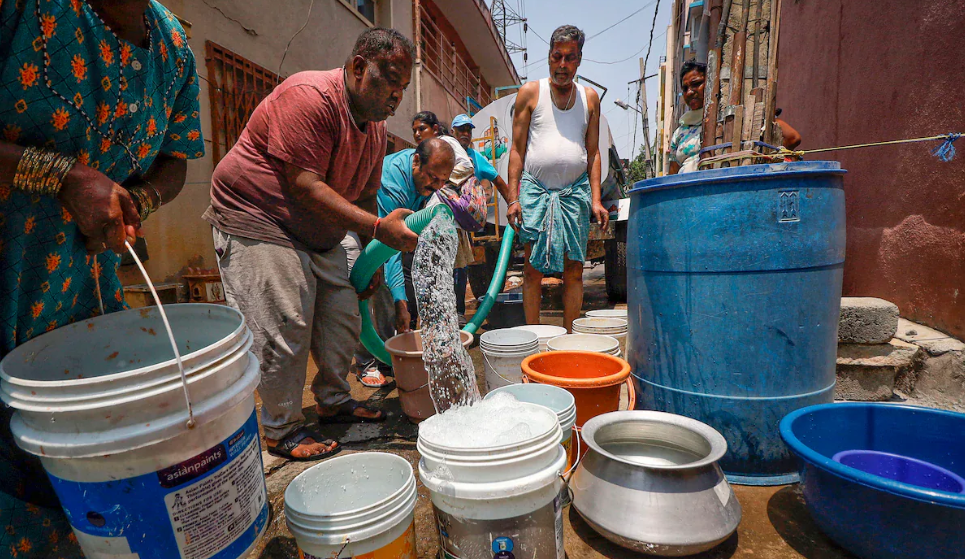
Residents are struggling to obtain water for household purpose.
INTRODUCTION
The megacity of Bengaluru “Bangalore” in southern India, the “Silicon Valley of India”, is facing a serious water extremity. Bengaluru, the capital of the southern state of Karnataka, was hit by surprisingly hot February and March and low downfall. A situation that’s anticipated to worsen as brackish coffers are depleted. Bengaluru has lost 66 percent of its timbers and 74 percent of its lakes and gutters. The water crisis in Bangalore has become a pressing issue, attributed to several factors such as rapid urbanization, depletion of groundwater, and the emergence of Rain Cloud Technologies. This crisis has had a significant impact on the city’s populace, prompting widespread awareness about its severity.
Causes of water crisis
Bengaluru heavily relies on groundwater, with over 6,000 out of 14,000 bore wells drying up due to plummeting groundwater levels. The city requires 2,600 MLD (million litres per day) of water for both drinking and industrial purposes. The water shortage is not confined to Bengaluru alone, and it is not just a drinking water problem.
The entire state of Karnataka, as well as the adjoining areas of Telangana and Maharashtra, are experiencing water scarcity. Much of this is due to lower-than-normal rainfall in the region over the past year and the nature of underground aquifers in this area. The excessive reliance on the Cauvery River conceals a critical issue: Bengaluru’s natural water storage systems are in disarray. The economic ramifications have been substantial, disrupting industries and educational institutions alike. Additionally, heightened health risks have compounded the already dire situation. The crisis transcends geographical boundaries, affecting all corners of the city and straining its water resources. Alongside water scarcity, concerns regarding the quality of available water sources have escalated, further complicating the situation.
Solutions to the water crisis

Despite these challenges, efforts are underway to address the crisis through various means, including water conservation initiatives and the exploration of innovative technologies like rainwater harvesting and water recycling. Effective water management strategies and public awareness campaigns are crucial in mitigating the crisis.
Implement water conservation measures: Encourage the adoption of water-saving practices in households and industries, such as fixing leaks, using low-flow showerheads, and reusing greywater for gardening to conserve water.
Leak detection and repair programs: Implement leak detection and repair programs to reduce overall water loss caused by unnoticed leaks.
Promote rainwater harvesting and greywater reuse: Promote rainwater harvesting and greywater reuse to capture rainwater for later use and reuse gently used water from sinks and showers for tasks like flushing toilets, reducing A reliance on piped water.
Improve water management of the Cauvery River: Improving water management practices for the Cauvery River, which serves as Bangalore’s primary water source, can lead to more efficient water distribution and reduced wastage.
Conclusion
The major lakes and tanks in Bangalore can be eviscerated, restored, and defended to serve as important water storage resources. Wastewater treatment and desalination are implicit options to condense brackish supplies. Still, these results bear careful planning and investment in structure. Perfecting water treatment shops, channels, and distribution systems can minimize water loss and meliorate overall effectiveness. Public awareness campaigns can educate citizens about the significance of water conservation and empower them to adopt sustainable practices. It is imperative for all stakeholders to take responsibility and collaborate towards ensuring water safety in Bangalore, thereby safeguarding the city’s future against the looming water challenges.



